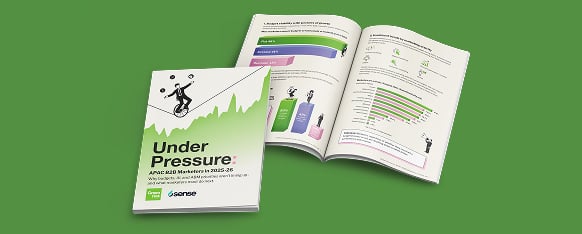In the modern day of marketing, prospects are becoming more informed by gathering research and travelling down the buyer’s journey before they’re even ready to engage with Sales. So, how does Marketing close the gap between their efforts and Sales’ results? One key indicator of marketing impact is through a contact’s lead score.
Lead scoring means assigning a value (a score) for a behavioural activity or a demographic pattern. These scores are then added up over the course of the lead lifecycle.
From this, you can learn which prospects are the warmest towards your marketing campaigns, and the readiest to be passed over to sales for helpful follow up.
In our marketing automation models, there are two main types of scoring that we use:
- Explicit information
This includes demographic and firmographic information such as BANT qualification. We take this information from things such as job role, company size and other explicit information captured, building it into the scoring model.
- Implicit information
This incorporates a prospect’s digital activity into the scoring model. Building in activities such as engagement with emails, webpage views, content downloads, sharing and many others is critical to give a clear indication of engagement.
Read more: What you risk if you don’t clean up your data
Lead scoring models
Lead scoring plays an integral role in classifying leads in B2B marketing automation. However, many marketers still have trouble with it.
Longer buyer journeys mean there is a move away from quick marketing wins towards a more nurtured approach.
A lead scoring model should be fluid and adaptable and constantly open to revision. You don’t set it up, turn it on and leave it alone.
Here are a few tips for setting up your lead scoring:
- Build 3 different scores – By splitting our demographic and behavioural scores (and then having a combined lead score) this will help you to understand how people have made up their own score.
- Embrace negative scores – Score decay is a great way to sift out junk and slowly remove those who are no longer interested. Adding in negative demographic scores for competitors or negative behavioural scoring for inactivity will refine the leads you classify as sales-ready.
- Get rid of email open scores – A lot of emphasis is placed on the ‘Email Open’ stat and how it is a measure of email effectiveness. But an email opened doesn’t mean engagement with content. Much greater emphasis should be placed on a contact visiting your website, clicking your emails or submitting a form.
At Green Hat, we’re always looking for innovative ways to tinker with our lead scoring models as we realise their importance for the marketing operations of our clients. If you have any feedback or want to discuss the best way to implement a lead scoring model, feel free to get in touch with us.

 Marketing Automation
Marketing Automation Demand Generation
Demand Generation





